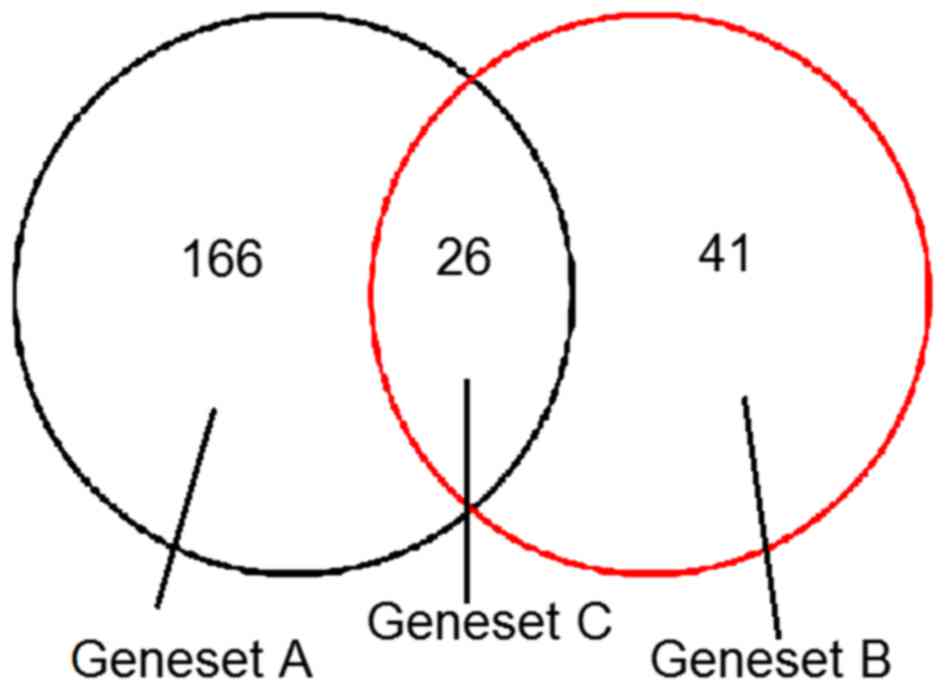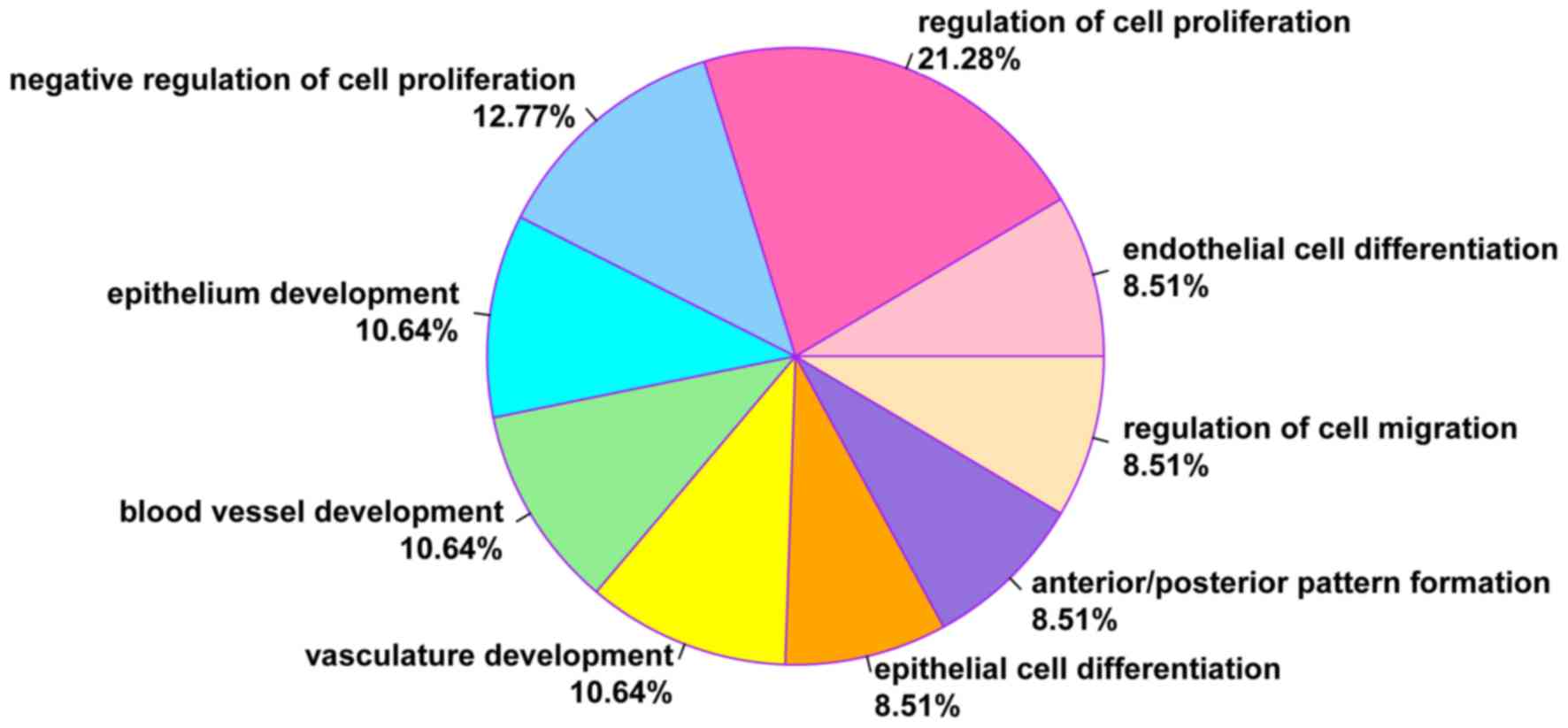|
1
|
Marneros AG, Norris JE, Watanabe S,
Reichenberger E and Olsen BR: Genome scans provide evidence for
keloid susceptibility loci on chromosomes 2q23 and 7p11. J Invest
Dermatol. 122:1126–1132. 2004. View Article : Google Scholar : PubMed/NCBI
|
|
2
|
Fong CY, Biswas A, Subramanian A,
Srinivasan A, Choolani M and Bongso A: Human keloid cell
characterization and inhibition of growth with human Wharton's
jelly stem cell extracts. J Cell Biochem. 115:826–838. 2014.
View Article : Google Scholar : PubMed/NCBI
|
|
3
|
Asboe-Hansen G, Brodthagen H and Zachariae
L: Treatment of keloids with topical injections of hydrocortisone
acetate. AMA Arch Derm. 73:162–165. 1956. View Article : Google Scholar : PubMed/NCBI
|
|
4
|
Russell JD, Russell SB and Trupin KM:
Differential effects of hydrocortisone on both growth and collagen
metabolism of human fibroblasts from normal and keloid tissue. J
Cell Physiol. 97:221–229. 1978. View Article : Google Scholar : PubMed/NCBI
|
|
5
|
Russell SB, Russell JD and Trupin JS:
Alteration of amino acid transport by hydrocortisone. Different
effects in human fibroblasts derived from normal skin and keloid. J
Biol Chem. 257:9525–9531. 1982.PubMed/NCBI
|
|
6
|
Trupin JS, Russell SB and Russell JD:
Variation in prolyl hydroxylase activity of keloid-derived and
normal human fibroblasts in response to hydrocortisone and ascorbic
acid. Coll Relat Res. 3:13–23. 1983. View Article : Google Scholar : PubMed/NCBI
|
|
7
|
Ladin DA, Hou Z, Patel D, McPhail M, Olson
JC, Saed GM and Fivenson DP: p53 and apoptosis alterations in
keloids and keloid fibroblasts. Wound Repair Regen. 6:28–37. 1998.
View Article : Google Scholar : PubMed/NCBI
|
|
8
|
Meyer LJ, Russell SB, Russell JD, Trupin
JS, Egbert BM, Shuster S and Stern R: Reduced hyaluronan in keloid
tissue and cultured keloid fibroblasts. J Investig Dermatol.
114:953–959. 2000. View Article : Google Scholar : PubMed/NCBI
|
|
9
|
Mantripragada KK, Buckley PG, de Ståhl
Diaz T and Dumanski JP: Genomic microarrays in the spotlight.
Trends Genet. 20:87–94. 2004. View Article : Google Scholar : PubMed/NCBI
|
|
10
|
Smith JC, Boone BE, Opalenik SR, Williams
SM and Russell SB: Gene profiling of keloid fibroblasts shows
altered expression in multiple fibrosis-associated pathways. J
Invest Dermatol. 128:1298–1310. 2008. View Article : Google Scholar : PubMed/NCBI
|
|
11
|
Seo J and Hoffman EP: Probe set
algorithms: Is there a rational best bet? BMC Bioinformatics.
7:3952006. View Article : Google Scholar : PubMed/NCBI
|
|
12
|
Smyth GK: Linear models and empirical
bayes methods for assessing differential expression in microarray
experiments. Stat Appl Genet Mol Biol. 3:Article32004. View Article : Google Scholar : PubMed/NCBI
|
|
13
|
Bland JM and Altman DG: Multiple
significance tests: The Bonferroni method. BMJ. 310:1701995.
View Article : Google Scholar : PubMed/NCBI
|
|
14
|
Huang da W, Sherman BT and Lempicki RA:
Systematic and integrative analysis of large gene lists using DAVID
bioinformatics resources. Nat Protoc. 4:44–57. 2009. View Article : Google Scholar : PubMed/NCBI
|
|
15
|
Xie C, Mao X, Huang J, Ding Y, Wu J, Dong
S, Kong L, Gao G, Li CY and Wei L: KOBAS 2.0: A web server for
annotation and identification of enriched pathways and diseases.
Nucleic Acids Res. 39:W316–W322. 2011. View Article : Google Scholar : PubMed/NCBI
|
|
16
|
Wang J, Duncan D, Shi Z and Zhang B:
WEB-based GEne SeT AnaLysis Toolkit (WebGestalt): Update 2013.
Nucleic Acids Res. 41:W77–W83. 2013. View Article : Google Scholar : PubMed/NCBI
|
|
17
|
Lamb J: The Connectivity Map: A new tool
for biomedical research. Nat Rev Cancer. 7:54–60. 2007. View Article : Google Scholar : PubMed/NCBI
|
|
18
|
Pufe T, Petersen WJ, Miosge N, Goldring
MB, Mentlein R, Varoga DJ and Tillmann BN: Endostatin/collagen
XVIII-an inhibitor of angiogenesis-is expressed in cartilage and
fibrocartilage. Matrix Biol. 23:267–276. 2004. View Article : Google Scholar : PubMed/NCBI
|
|
19
|
Mogili NS, Krishnaswamy VR, Jayaraman M,
Rajaram R, Venkatraman A and Korrapati PS: Altered angiogenic
balance in keloids: A key to therapeutic intervention. Transl Res.
159:182–189. 2012. View Article : Google Scholar : PubMed/NCBI
|
|
20
|
Deshpande M, Papp S, Schaffer L and
Pouyani T: Hydrocortisone and triiodothyronine regulate hyaluronate
synthesis in a tissue-engineered human dermal equivalent through
independent pathways. J Biosci Bioeng. 119:226–236. 2015.
View Article : Google Scholar : PubMed/NCBI
|
|
21
|
Bolós V, Grego-Bessa J and de la Pompa JL:
Notch signaling in development and cancer. Endocr Rev. 28:339–363.
2007. View Article : Google Scholar : PubMed/NCBI
|
|
22
|
Syed F and Bayat A: Notch signaling
pathway in keloid disease: Enhanced fibroblast activity in a
Jagged-1 peptide-dependent manner in lesional vs. Extralesional
fibroblasts. Wound Repair Regen. 20:688–706. 2012. View Article : Google Scholar : PubMed/NCBI
|
|
23
|
Ehrlich HP, Desmoulière A, Diegelmann RF,
Cohen IK, Compton CC, Garner WL, Kapanci Y and Gabbiani G:
Morphological and immunochemical differences between keloid and
hypertrophic scar. Am J Pathol. 145:105–113. 1994.PubMed/NCBI
|
|
24
|
Kischer CW, Thies AC and Chvapil M:
Perivascular myofibroblasts and microvascular occlusion in
hypertrophic scars and keloids. Hum Pathol. 13:819–824. 1982.
View Article : Google Scholar : PubMed/NCBI
|
|
25
|
Nör JE, Christensen J, Mooney DJ and
Polverini PJ: Vascular endothelial growth factor (VEGF)-mediated
angiogenesis is associated with enhanced endothelial cell survival
and induction of Bcl-2 expression. Am J Pathol. 154:375–384. 1999.
View Article : Google Scholar : PubMed/NCBI
|
|
26
|
Gira AK, Brown LF, Washington CV, Cohen C
and Arbiser JL: Keloids demonstrate high-level epidermal expression
of vascular endothelial growth factor. J Am Acad Dermatol.
50:850–853. 2004. View Article : Google Scholar : PubMed/NCBI
|
|
27
|
Fujiwara M, Muragaki Y and Ooshima A:
Upregulation of transforming growth factor-beta1 and vascular
endothelial growth factor in cultured keloid fibroblasts: Relevance
to angiogenic activity. Arch Dermatol Res. 297:161–169. 2005.
View Article : Google Scholar : PubMed/NCBI
|
|
28
|
Javad F, Marriage F, Bayat A and Day PJ:
Perturbation of cell cycle expression in keloid fibroblast.
Skinmed. 10:152–159. 2012.PubMed/NCBI
|
|
29
|
Huang L, Wong Y, Cai Y, Lung I, Leung C
and Burd A: Low-dose 5-fluorouracil induces cell cycle G2 arrest
and apoptosis in keloid fibroblasts. Br J Dermatol. 163:1181–1185.
2010. View Article : Google Scholar : PubMed/NCBI
|
|
30
|
Lane DP: The regulation of p53 function:
Steiner Award Lecture. Int J Cancer. 57:623–627. 1994. View Article : Google Scholar : PubMed/NCBI
|
|
31
|
Tanaka A, Hatoko M, Tada H, Iioka H,
Niitsuma K and Miyagawa S: Expression of p53 family in scars. J
Dermatol Sci. 34:17–24. 2004. View Article : Google Scholar : PubMed/NCBI
|
|
32
|
Lukert BP and Raisz LG:
Glucocorticoid-induced osteoporosis. Rheum Dis Clin North Am.
20:629–650. 1994.PubMed/NCBI
|
|
33
|
Wichers M, Springer W, Bidlingmaier F and
Klingmüller D: The influence of hydrocortisone substitution on the
quality of life and parameters of bone metabolism in patients with
secondary hypocortisolism. Clin Endocrinol (Oxf). 50:759–765. 1999.
View Article : Google Scholar : PubMed/NCBI
|
|
34
|
Langdahl BL, Løkke E, Carstens M, Stenkjær
LL and Eriksen EF: Osteoporotic Fractures Are Associated with an
86-Base Pair Repeat Polymorphism in the Interleukin-1-Receptor
Antagonist Gene But Not with Polymorphisms in the Interleukin-1beta
Gene. J Bone Miner Res. 15:402–414. 2000. View Article : Google Scholar : PubMed/NCBI
|
|
35
|
Kimble RB, Vannice JL, Bloedow DC,
Thompson RC, Hopfer W, Kung VT, Brownfield C and Pacifici R:
Interleukin-1 receptor antagonist decreases bone loss and bone
resorption in ovariectomized rats. J Clin Invest. 93:1959–1967.
1994. View Article : Google Scholar : PubMed/NCBI
|
|
36
|
Chen HY, Chen WC, Wu MC, Tsai FJ and Lin
CC: Interleukin-1beta and interleukin-1 receptor antagonist gene
polymorphism in postmenopausal women: Correlation to bone mineral
density and susceptibility to osteoporosis. Maturitas. 44:49–54.
2003. View Article : Google Scholar : PubMed/NCBI
|
|
37
|
Mann V and Ralston SH: Meta-analysis of
COL1A1 Sp1 polymorphism in relation to bone mineral density and
osteoporotic fracture. Bone. 32:711–717. 2003. View Article : Google Scholar : PubMed/NCBI
|
|
38
|
Viguet-Carrin S, Garnero P and Delmas P:
The role of collagen in bone strength. Osteoporos Int. 17:319–336.
2006. View Article : Google Scholar : PubMed/NCBI
|
|
39
|
Sun Y, Sun Q, Fan C, Shen J, Zhao W, Guo
Y, Su T, Wang W, Ning G and Bian L: Diagnosis and therapy for
Cushing's disease with negative dynamic MRI finding: A
single-centre experience. Clin Endocrinol (Oxf). 76:868–876. 2012.
View Article : Google Scholar : PubMed/NCBI
|
|
40
|
Bori Segura G, Rubio Torres y Gutierrez A,
Herrera Gómez LE and Olguín Uribe J: Efficacy and tolerability of
acemetacin, a non-steroidal anti-inflammatory drug, in Mexican
patients: Result of the ETAPAM Study. Proc West Pharmacol Soc.
45:pp. 104–107. 2002, PubMed/NCBI
|
















